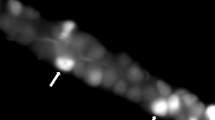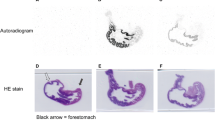Abstract
The accumulation of [14C]aminopyrine (AP) is a valuable and widely used method to probe acid secretion of gastric glands and parietal cells. Usually, the dry weight of glands is used to normalize the AP accumulation ratio, and since the nonhomogeneity of the suspension makes it impossible to evenly distribute glands by simple pipetting, it is necessary to scrupulously dry and weigh each and every experimental sample. Thus, massive, time-consuming procedures of tube drying and weighing are involved. Moreover, the weighing of ∼1 mg dried gland samples in a 1-g Eppendorf tube introduces considerable sample variance. Here, we present a modified protocol to simplify the AP accumulation method by introducing a generic 3H labeling of protein for normalization. Freshly isolated glands were treated with high specific activity 3H-labeled succinimidyl propionate (3H-succ, 60 Ci/mmol) for 10 min at room temperature during the normal isolation/washing procedure. This reagent reacts with primary amines, and even at normal cell pH the efficiency of reaction (25–30%) is more than adequate. The 3H-labeled glands are then processed normally with simultaneous monitoring of 3H (representing gland amount) and AP (representing the extent of acid accumulation) in separate energy windows of a liquid scintillation counter. Dose- and time-dependent efficiency of 3H labeling were evaluated. The relations between labeling and gland protein and dry weight were linear. No detrimental effects of reagent were noted in the useful range of 1–3 nM 3H-succ. Although some limited sample weighing or protein determination must be made for each batch of 3H-labeled glands, this method avoids massive tube weighings and provides the convenience of double label counting with a highly reproducible method for normalizing data.
Similar content being viewed by others
REFERENCES
Forte J, Soll A: Cell biology of hydrochloric acid secretion. In Handbook of Physiology. The Gastrointestinal System. Salivary, Gastric, Pancreatic, and Hepatobiliary Secretion, Bethesda, Maryland. American Physiology Society, 1989, Section 6, Vol. III. pp 207–228
Chew CS, Hersey SJ, Sachs G, Berglindh T: Histamine responsiveness of isolated gastric glands. Am J Physiol 238:G312–G320, 1980
Leth R, Lundell L, Olbe L: Effects of some gastrointestinal peptides on isolated human and rabbit gastric glands. Scand J Gastroenterol 26:89–96, 1991
Berglindh T, Sachs G: Emerging strategies in ulcer therapy: Pumps and receptors. Scand J Gastroenterol Suppl 108:7–14, 1985
Wallmark B, Fryklund J: Pharmacological agents of gastric acid secretion: Receptor antagonists and pump inhibitors. Methods Enzymol 191:721–738, 1990
Bastaki SM, Chandranath I, Garner A: Comparison of five antisecretory agents acting via gastric H+/K+-ATPase. J Physiol 94:19–23, 2000
Berglindh T, Helander HF, Obrink, KJ: Effects of secretagogues on oxygen consumption, aminopyrine accumulation and morphology in isolated gastric glands. Acta Physiol Scand 97: 401–414, 1976
Berglindh, T, Obrink, KJ: A method for preparing isolated glands from the rabbit gastric mucosa. Acta Physiol Scand 96:150–159, 1976
Berglindh T: Gastric glands and cells: Preparation and in vitro methods. Methods Enzymol 192:93–107, 1990
Sack J, Spenney JG: Aminopyrine accumulation by mammalian gastric glands: An analysis of the technique. Am J Physiol 243:LG313–LG319, 1982
Thibodeau, A, Yao X, Forte JG: Acid secretion in alpha-toxin-permeabilized gastric glands. Biochem Cell Biol 72:26–35, 1994
Rong, Q, Utevskaya O, Ramilo M, Chow DC, Forte JG: Nucleotide metabolism by gastric glands and H++K--ATPase-enriched membranes. Am J Physiol 274:G103–G110, 1998
Füssle R, Bhakdi S, Sziegoleit A, Tranum-Jensen J, Kranz T, Wellensiek HJ: On the mechanism of membrane damage by Staphylococcus aureus alpha-toxin. J Cell Biol 91(1):83–94, 1981
Bradford MM. A rapid and sensitive method for the quantitation of microgram quantities of protein utilizing the principle of protein-dye binding. Ann Biochem 72:248–254, 1976
Author information
Authors and Affiliations
Rights and permissions
About this article
Cite this article
Rong, Q., Bastaki, S. & Forte, J. An Improved Method to Evaluate Secretory Activity of Isolated Gastric Glands and Cells. Dig Dis Sci 47, 1001–1007 (2002). https://doi.org/10.1023/A:1015073620519
Issue Date:
DOI: https://doi.org/10.1023/A:1015073620519




